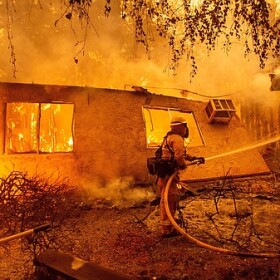Southern California firefighters are tapping the University of California San Diego supercomputer to figure out where a wildfire is heading.
Orange County fire officials started using the supercomputer's WIFIRE tool in September. The sophisticated fire modeling software uses real-time data to run rapid simulations of a fire's progress.
The tool was used by Southern California firefighters to battle the Palisades Fire in Los Angeles on Monday. WIFIRE helped crews by providing six-hour predictions of where the fire was headed.
RELATED: Wildfire Risk Elevated With Wave Of Hot Santa Ana Winds
“It helps to see where the fire is likely going to go,” said Raymond De Callafon, a UCSD engineer who worked on the project. “So, a fire department can use this for planning purposes with their limited resources. It can also be used to plan, maybe their aircraft that will go over. Where to put the fire out.”
Locally, the supercomputer can tap into San Diego Gas & Electric’s extensive network of weather stations in the backcountry.
That gives engineers real-time data like temperature, humidity and wind speeds.
The simulations also use information compiled by the National Weather Service.
“What we’re using here at the National Weather Service is a tool on satellite that updates every 1 to 5 minutes — 24/7, 365. And we can use that tool to detect a wildfire,” said Alex Tardy, a meteorologist with the National Weather Service.
RELATED: Report: Wildfires Cutting Into Greenhouse Gas Reductions
Once the origin of the fire is located the UCSD supercomputers can begin running its algorithms. Crunching the numbers is fast and an internet connection is all fire officials need to access the data.
“The simulations themselves, run at the San Diego supercomputer center, but the simulations, the results are displayed by a web interface. So the information on those fires could be accessed from anywhere,” Callafon said.
The system would have been invaluable if it was available for San Diego’s most destructive wildfires in 2003 and 2007.








